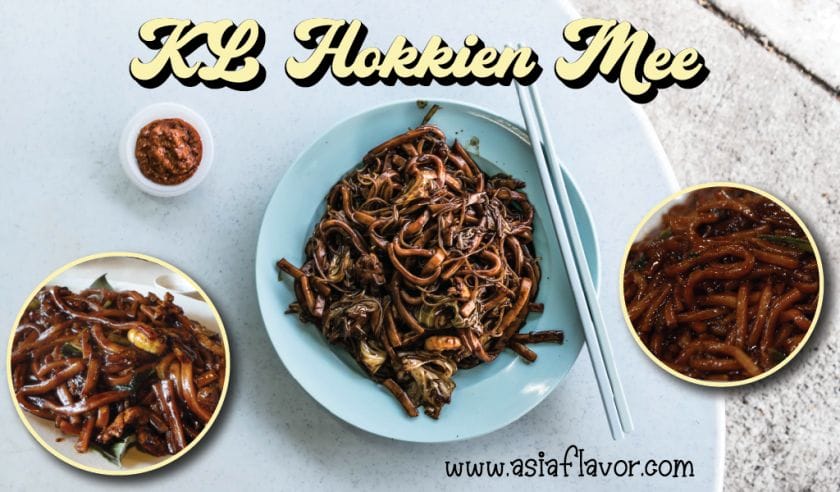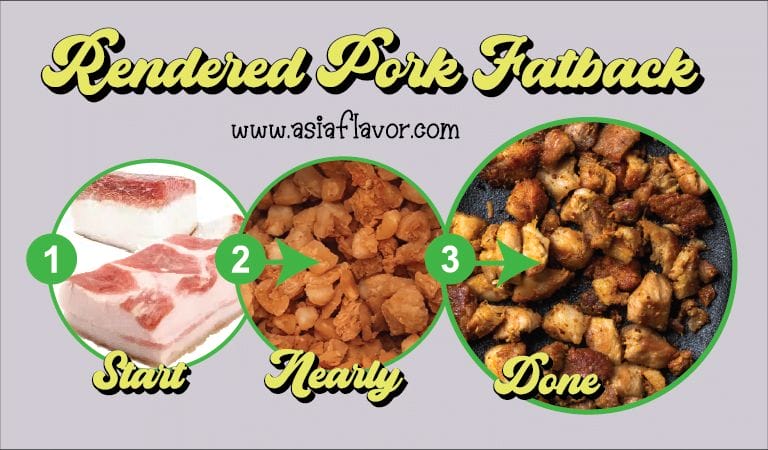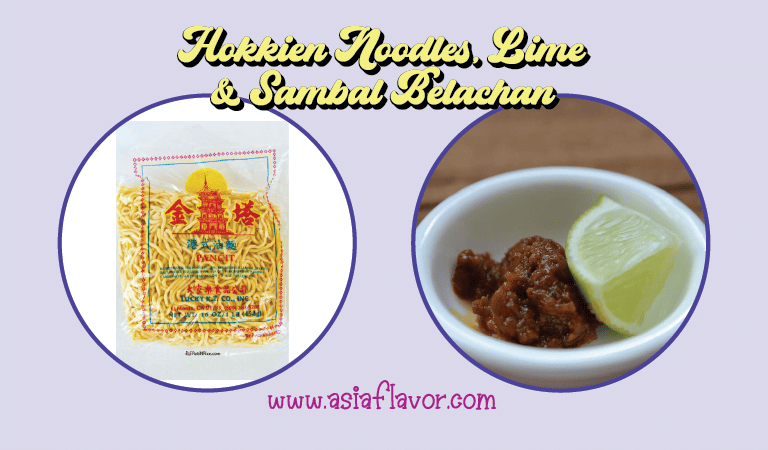Get the best recipe for Hokkien Mee made KL style. Using a dark caramel cooking sauce that acts as a perfect sweet marinade for the delicious Chinese pork and salty prawns. So good you’ll want to lick the plate!
Table Of Contents
Is KL Hokkien Mee Different To Hokkien Mee?
It Sure Is! The traditional Malaysian and Singaporean Hokkien Mee may share the same name as KL Hokkien Mee and they share the same historical roots, but that is where the similarity ends. They are very different plates.
Between the 1850s and 1920s, China was in a state of havoc. The Qing Dynasty founded in 1636 AD was coming to an end. China found itself thrust into rebellions, wars and famine. At the same time, the British Empire was booming.
The British were trading with China for tea, porcelain, and other fine goods. In exchange, the British Empire provided the Chinese with highly addictive opium, which a large percentage of the local population became hooked on. The Qing Dynasty started to crack down on the use of Opium but this angered the British and lead to the Opium Wars of 1839 and 1856, both of which were won by the British and both of which saw harsh and unfair treaties against China being put in place.
These wars and treaties lead further to the weakening of the Qing Dynasty. 1912 saw the forced the abdication of Puyi, the last emperor, ending 2000 years of Imperial Chinese rule.
However in nearby British Malaya things were a different picture. The economy was booming with a massive trade in tin, rubber, spices and other goods. This meant there was a huge need for manual labor to work in the mines, plantations and ports.
The troubles in China and the perceived wealth of British Malaya led to a huge number of Hokkien (and Cantonese) people arriving in British Malaya (now Malaysia and Singapore) to work in the ports, plantations and mines.
The Founding Of KL Hokkien Mee
In 1905 Wong Kian Lee (also known as Ong Kim Lian) arrived in Kuala Lumpur and settled in Kampung Bahru.
He established a hawker stall, and started to sell a soupy looking stir fried noodle dish from his Fujian hometown, Anxi. As is usual in the trade, others saw his success and they started to sell fried noodles.
Competition grew and so Wong decided to develop a new dish, using local ingredients and the cooking styles from his Chinese homeland. Soon he had created his own original dish of noodles.
He used thicker, fatter, juicer noodles. He added a lot of the local dark thick soy sauce as well as the lard he rendered from pork. This he then stewed and finally fried in a wok.
His creation soon was famously popular. When asked what the name of this signature dish was, he replied “Hokkien mee”, because he came from Fujian.
In 1927, Wong moved to Petaling Street in Chinatown and founded Kim Lian Kee.

The Resulting History?
Kim Lian Kee’s KL Hokkien mee is now emulated by many others and can be found widely throughout KL and beyond. The dish is so popular it is regarded a KL food icon and sits up there with the greats, like Nasi Lemak, Char Kway Teow and Mee Rebus.
It’s thick yellow noodles are stir fried in a charcoal fired wok, which due to the super heat provides the famous flavors of caramelized sugars and pork. These thick noodles are first stewed. They are then stir fried in a pork stock with dried fish and dark soy sauce until almost dry.
This dish is not for the squeamish, not for the weight conscious dieter, and definitely not for those seeking a Halal meal. This is because Lard is always liberally used, and depending upon which stall you choose to buy from you’ll get some very unique combinations.
These combinations may include the traditional pork belly, cabbage and prawns or you may find pigs liver, squid, pork crackling and salted fish. All of which add flavor to the savory noodles along with caramel smokey tones from the charcoal fired wok.
While we may not be able to cook the dish on a charcoal fired wok in our homes, we can create a home cook version. This recipe has been tested on family and friends, plus many locals and been received with great delight and always a thumbs up!
This recipe calls for Cheong Chan Caramel Sauce. This can be replaced if you have your own brand you prefer. You can also make your own by boiling a can of condensed milk (a staple in all Malaysian homes)







